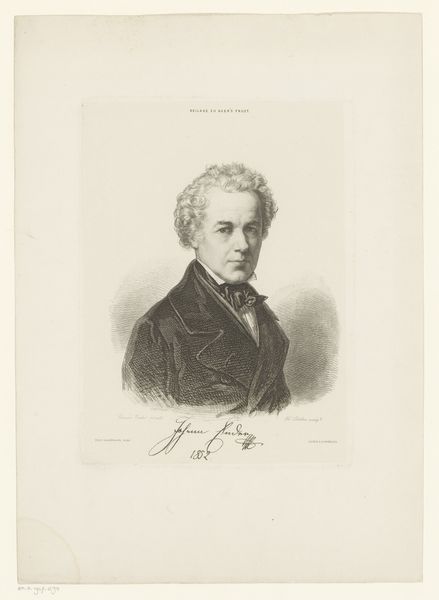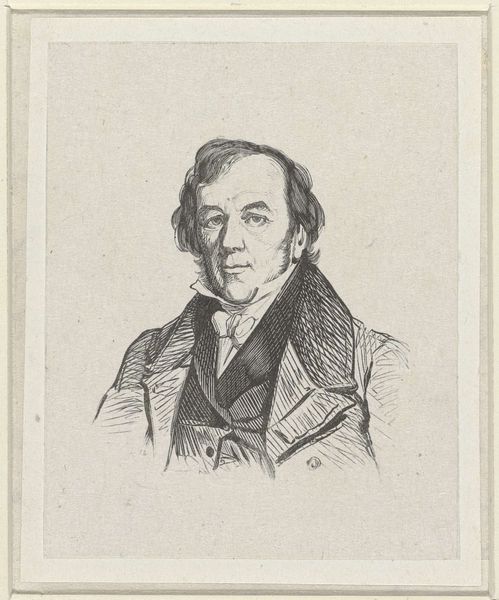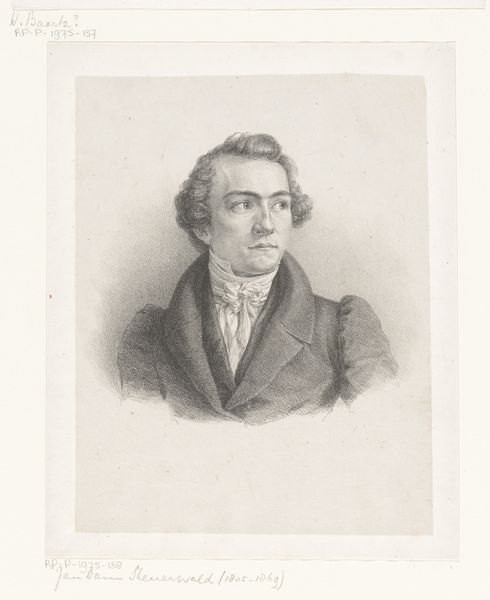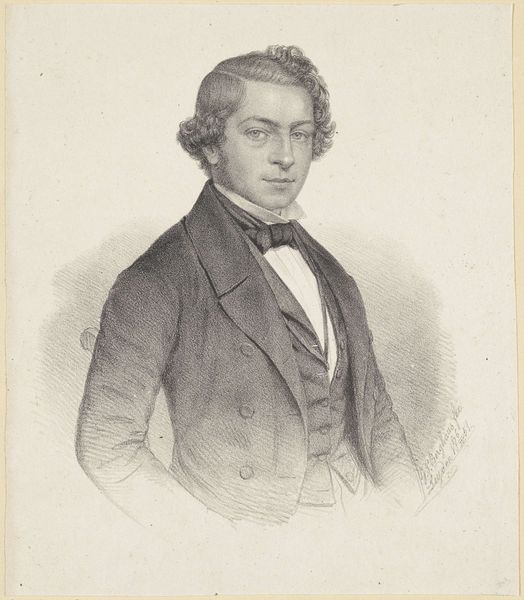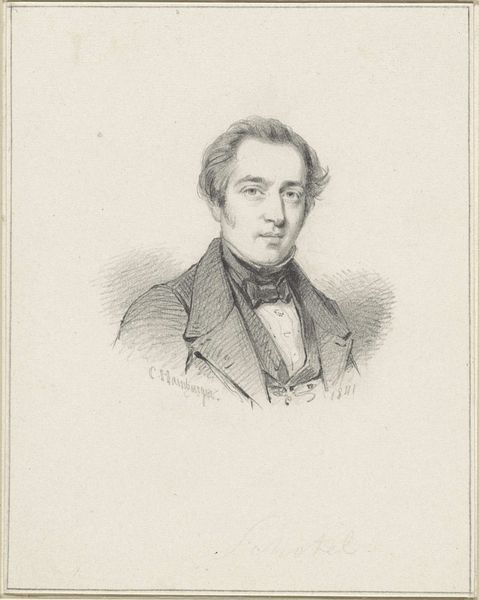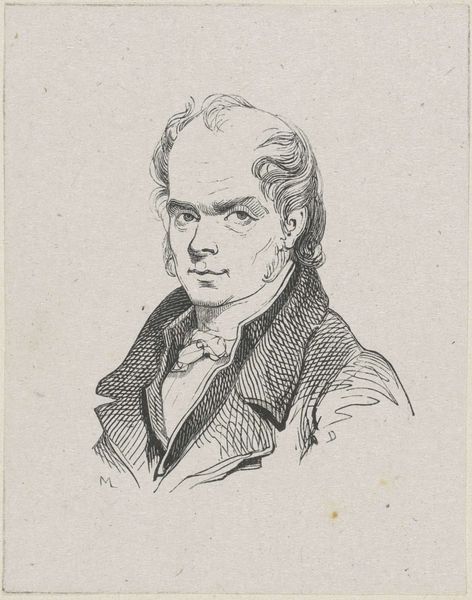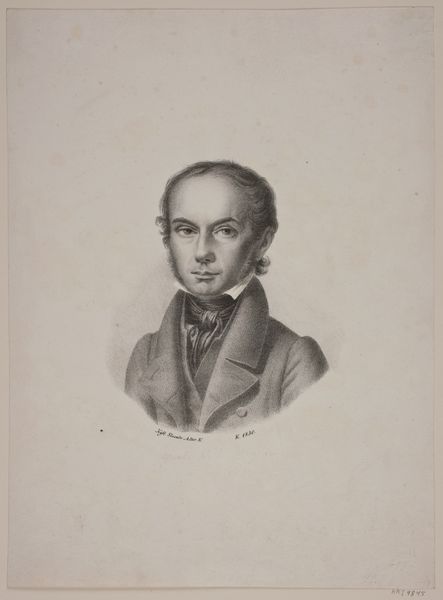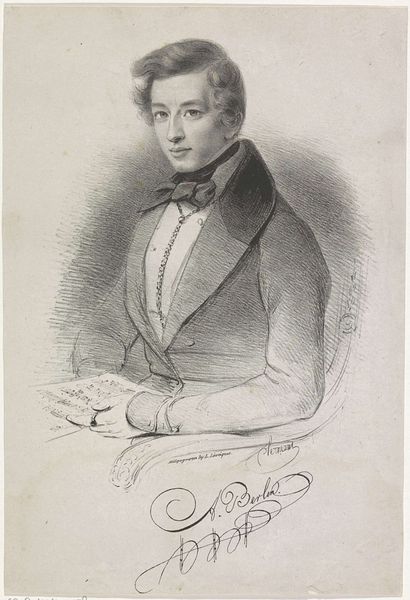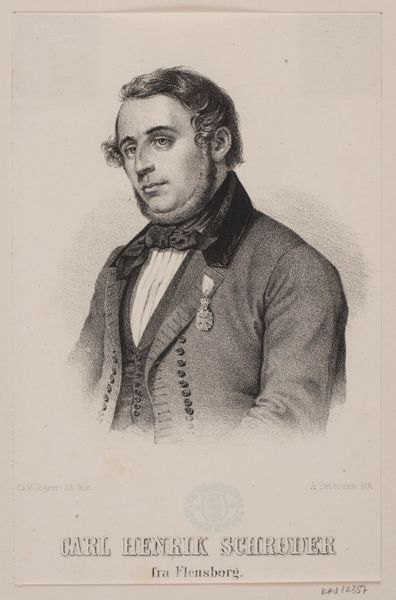
drawing, pencil, graphite
#
portrait
#
drawing
#
caricature
#
pencil drawing
#
romanticism
#
pencil
#
graphite
Dimensions: height 195 mm, width 145 mm
Copyright: Rijks Museum: Open Domain
Curator: This is a pencil and graphite drawing held here at the Rijksmuseum. It’s entitled "Portret van Johannes Adrianus van der Drift", created by Jean-Baptiste Van der Hulst sometime between 1800 and 1862. Editor: Intricate lines define a confident posture; look at the detailed use of pencil and graphite! It evokes a feeling of contained intensity and… almost arrogance? Curator: I see the subject’s folded arms, waistcoat and loosely tied bow tie, and I am led to question the context. What sort of bourgeois societal circles did van der Hulst engage in to be commissioned for this kind of work? What was van der Drift’s position that warranted the formal representation? Editor: Formally, there is a dynamic play of light and shadow, especially across his face, achieved through subtle gradations in the pencil work. Note how his eyes, in particular, are meticulously rendered, which draws the viewer in. I read an inherent romanticism in its precise lines. Curator: Do you consider the industrial manufacturing of pencils at this time, and who would have had the economic means to even obtain these materials, let alone sit for a portrait? How does the Romantic style choice then reflect the social dynamic and power? Editor: But the artistry is unmistakable! The linear precision in this work captures more than just a likeness, it renders character. Consider the construction of line, shade and tonal variation. A superb example of Romantic portraiture! Curator: I concede it’s visually striking. Yet, how much of our admiration is based on perpetuated systems of power that the artist and patron were benefiting from during its making? Was Van der Hulst financially dependent on the patronage from his elite subjects? Editor: A fair point; the materials indeed speak to the economics of the time. Nevertheless, without a mastery of form and the ability to communicate psychological depth, the drawing falls flat regardless of its socioeconomic context. Curator: Perhaps… Focusing on social structures gives additional depth, wouldn’t you agree? Editor: Of course, context matters, but formal choices give insight to meaning as well! Curator: It's remarkable how the materials of the work invite discussions on larger power dynamics of the time. Editor: Yes, the play between form and context gives such insight into this singular portrait.
Comments
No comments
Be the first to comment and join the conversation on the ultimate creative platform.
